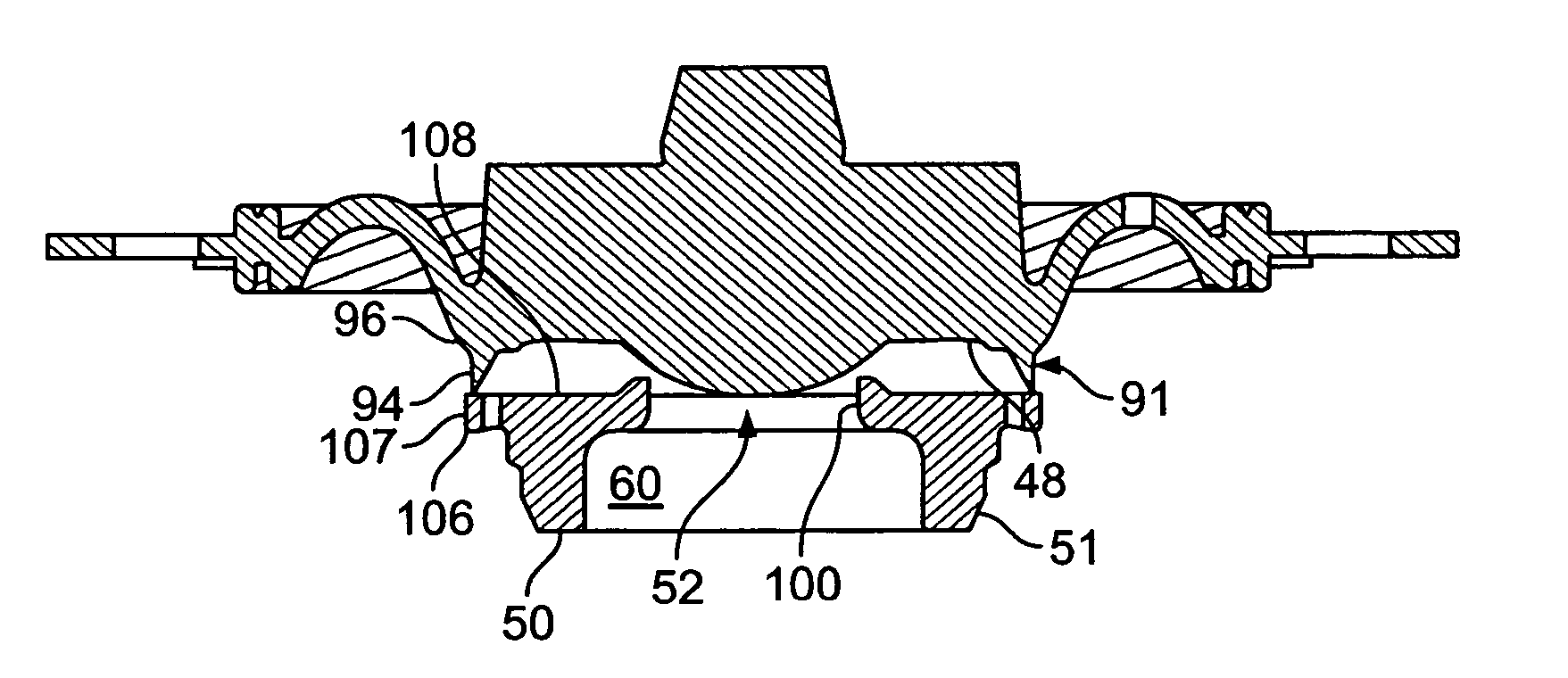Low-flow valve
a low-flow, valve technology, applied in the field of valves, can solve the problems of plant death, plant damage, plant roots being damaged, etc., and achieve the effect of reducing the number of valves
- Summary
- Abstract
- Description
- Claims
- Application Information
AI Technical Summary
Problems solved by technology
Method used
Image
Examples
second embodiment
[0044] the insert, referenced herein as insert 250, is depicted in FIGS. 8-10 in cooperation with the diaphragm 40. The insert 250 has an interrupted radial periphery 253 such that a top side 252 has small notches 254 extending radially outward and on an outside circumferential surface 256. As can be seen, the rib 94 of the diaphragm 40 is positioned near the radial periphery 253 of the top side of the insert 250. Together, the rib 94 and the top side notches 254 define openings 260 for permitting water and small particulate matter to pass therethrough, while prohibiting relatively large particulate matter from passing. Again, the insert 250 has an annular ridge 262 that forms a seal with the dome 90, as described for insert 50 and as shown in FIG. 8.
[0045]FIG. 9 shows the insert 250 and diaphragm 40 in an arrangement similar to that of FIG. 6. The dome 90 is actuated to move a short distance away from the ridge 262 to permit passage of water and particulate matter that is able to p...
third embodiment
[0048]FIGS. 11 and 12 depict the insert, referenced as insert 350, and the diaphragm 40. The insert 350 has a top side 352 with a continuous, uninterrupted surface. As depicted in FIG. 11, a closed position is depicted wherein the annular rib 94 of the diaphragm 40 is in contact with the top side 352, and wherein the dome 90 is in contact with a ridge 362 on the insert 350.
[0049] With this embodiment of the insert 350, any foreign particulate matter that may become trapped between the rib 94 and the insert 350, or between the dome 90 and the ridge 362, does not completely or necessarily violate the integrity of the seal between the diaphragm 40 and the insert 350. More specifically, the contact between the dome 90 and the ridge 362 and the contact between the rib 94 and the insert 350 combine to form a seal that seals completely or enough such that an undesirable amount of water does not pass through the valve.
[0050]FIG. 12 depicts the diaphragm 40 and the insert 350 in an open pos...
PUM
 Login to View More
Login to View More Abstract
Description
Claims
Application Information
 Login to View More
Login to View More - R&D
- Intellectual Property
- Life Sciences
- Materials
- Tech Scout
- Unparalleled Data Quality
- Higher Quality Content
- 60% Fewer Hallucinations
Browse by: Latest US Patents, China's latest patents, Technical Efficacy Thesaurus, Application Domain, Technology Topic, Popular Technical Reports.
© 2025 PatSnap. All rights reserved.Legal|Privacy policy|Modern Slavery Act Transparency Statement|Sitemap|About US| Contact US: help@patsnap.com



